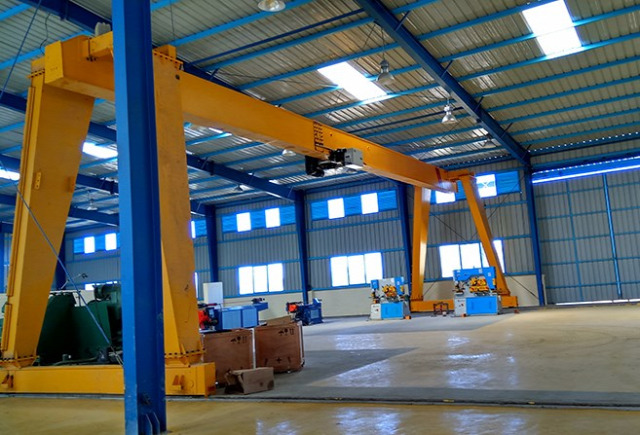Cranes make the lifting and shifting of heavy loads easier, and can greatly aid productivity in warehouses, factories, and also in any situation where such loads have to be handled. Cranes may be found in many configurations and will be mobile, or the ones that work on gantries in fixed locations. Gantry cranes can again be single girder, double girder, semi- gantry and even mobile.
Light-duty gantry cranes could be of the full gantry type, which is the mostly used crane in warehousing, freight yards, steelyards, railway yards, and high fabrication. Semi-gantry light-duty cranes are placed in locations which have space constraints to ensure one end in the gantry runs on elevated runways fixed towards the building.

Light-duty gantry cranes are excellent and provide high work efficiency, bring about reduced material costs, are safe and easy to work, have low energy consumption, and above all are pretty straight forward to put in and maintain. Prior to design or purchase a light-duty gantry crane you need to specify the rated load it will likely be supposed to carry. This should be the heaviest load that you will encounter throughout your daily operations. Some designs will allow a little rise in the highest weight, but it helps to make the working unsafe which is best avoided. Most cranes may have safety devices which will automatically cut off the strength if weights or poor operation cause unnecessary strain on the gear.
Other key elements that govern the design of these cranes are the lifting height as well as the length of the gantry. Lifting heights have got a bearing on the supporting structure, along with the span. Spans tend to be specified in such a manner that this leaves regions of operation clear in the movement of your gantry. The particular goods to get lifted can have a effect on the crane, since it then needs to also take into account lifting tackle and devices which may sometimes modify the working of the crane. Most cranes operate on three-phase power, but when there is any change in the original source of power, the gantry crane would be required to have motors and also other electrical equipment that may suit it. https://steelmillcranes.com/gantry-cranes/
When you specify the requirements of any light-duty gantry crane you should also glance at the comfort of maintenance and inspection of their working parts, since this ensures safe operations without breakdowns. It needs to be easy to lubricate every one of the moving parts like trolleys and crane traveling mechanisms. Hoists are filled with gear oil and it needs to be an easy task to look for oil levels so that they are topped up with time. Wire ropes has to be in the required strength which takes the utmost weight to get lifted with large factors of safety. Hooks and pulley sets need regular checking and this must be an easy task to do.
Once you specify your needs for a light-duty gantry crane, also make certain that the company that you may have listed for purchasing the crane from also provides proper after-sales service and contains experts who can install it, commission it, and provide free training in its operations to your staff.

